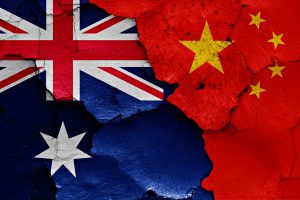Anthony Albanese’s historic visit to China last month — the first by an Australian prime minister since 2016 — has widely been heralded as a turning point in the bilateral relationship.
But Australians will be left wondering if stabilization has come at the cost of fundamental human rights.
Polling conducted by the United States Studies Centre reveals that an overwhelming 76 percent of Australians want their government to hold China to account on human rights. This figure jumps by almost 10 percent when there is an opportunity to act on the issue alongside like-minded countries like the United States. In fact, only a small minority of Australians (6 percent) disagree with doing so — a sentiment that also prevails among American and Japanese respondents.
These results come as no surprise.
There is a growing body of evidence detailing Beijing’s grave human rights abuses, not least in China’s Xinjiang region. A groundbreaking U.N. report released just over a year ago contains victim testimonies substantiating reports of mass arbitrary detention, torture, cultural and religious repression, coercive population control methods, and other “serious human rights violations” against Uyghurs and other Muslim minorities in Xinjiang. State-sponsored modern slavery is central to this so-called “re-education” project — as many as 1 million people in Xinjiang are estimated to be working in conditions of forced labor. The harrowing report ultimately concludes that the curtailing of rights in Xinjiang “may constitute crimes against humanity.”
Yet as human rights concerns have grown, so has Australia’s trade with Xinjiang.
Two-way trade between Xinjiang and Australia increased by 150 percent in the first four years of the Chinese Communist Party’s crackdown, which began in 2017. The vast majority of trade (73 percent) comes from Australia’s import of goods produced in the region. From solar panels to clothing, Australian companies are not only complicit in but ultimately profiting from Uyghur forced labor.
As the diplomatic freeze between the two countries thaws, attention should now turn to developing a coherent response to China’s egregious human rights abuses — an issue of major concern for the Australian public.
So, how can Australia work with allies like the United States to hold China to account on human rights?
Australia’s efforts to press China through bilateral and multilateral diplomatic channels have so far been ineffective. When asked about Australia’s response to the U.N. report on Xinjiang, Foreign Minister Penny Wong pointed to the government’s efforts to strengthen Australia’s Modern Slavery Act, legislation requiring certain domestic entities to submit annual statements detailing modern slavery risks in their operations and supply chains.
Yet, even with bolstered compliance and more onerous requirements for business, there remains little concrete evidence that corporate due diligence approaches can have a meaningful impact in combatting modern slavery on the ground. And these limitations are only magnified in the instance of state-sanctioned forced labor in Xinjiang — the CCP’s opaque, tightly controlled information environment makes it extremely difficult to conduct an independent and credible supply chain audit, rendering the already lackluster law even weaker.
Fortunately, and as the public are clearly attuned to, Australia does not have to approach this issue alone.
In the United States, the Uyghur Forced Labor Prevention Act (UFLPA), which came into effect in June last year, grants customs authorities greater power to block goods linked to forced labor from entering U.S. markets. The law assumes that any goods “mined, produced, or manufactured wholly or in part” in Xinjiang are the product of forced labor, unless companies can furnish “clear and convincing evidence” to challenge this presumption.
A similar bill, initially focused on Uyghur forced labor and later amended to not specify a particular geographic origin, passed the Australian Senate in August 2021 — with support from the then-opposition Labor party — but lapsed in the 2022 dissolution of Parliament and never became law. Such legislation would undeniably strengthen Australia’s modern slavery policy settings, and has received bipartisan support from the federal opposition, echoing a growing chorus of civil society. There is clearly room for the government to successfully pass similar legislation into law.
Short of more significant legislation, the Australian government could consider formalizing a data sharing mechanism with the United States in order to exchange information on instances of forced labor and specific modern slavery risks in supply chains. This could be expanded to include other allies like Japan, a leader in corporate human rights due diligence in Asia. Mapping supply chain risks in tandem with the United States and other allies would maximize the efficiency of national approaches and help to alleviate some of the bureaucratic burden that the Australian government has previously highlighted as an obstacle to effectively enforcing an import ban.
Above all, Australia must reckon with the price it is willing to pay for cooling tensions with China. Introducing stronger modern slavery provisions to hold China to account on human rights will no doubt bring challenges — it could threaten recent diplomatic gains and will likely pose hurdles to the green energy transition.
But polling shows that Australians may be unlikely to be satisfied with relationship repair that comes at the expense of standing up for basic human rights and freedoms on the global stage.

































